“Standby with the music in 5, 4, 3…”
For local election junkies, one of the most reliable ways to get your candidate fix is from the League of Women Voters debates, held before every local election and televised on Community Television Network. This year, The Chronicle took a behind-the-scenes look at the debates, spending Monday evening at CTN’s studios on South Industrial to see exactly what happens off camera. Though the league’s motto is “Because Democracy Isn’t A Spectator Sport,” for The Chronicle that night, it kinda was. (The complete debate schedule, including frequent rebroadcasts, is here. You can find a list of all local candidates for the November election on Washtenaw County’s website.)
Four groups of candidates debated on Monday, each race airing at the top of the hour starting at 6 p.m. But CTN staff and league volunteers were there well before that, setting up in the studio and touching base about their roles for the evening.
The job of moderating was split between Judy Mich, who handled the first two debates, and Sue Smith, who asked questions during the final two. Jeanine DeLay and Barbara Clarke kept track of time – one with a stopwatch and the other with bright posterboard cards held up off camera to tell candidates how much time was left. Sometimes it was challenging to get the attention of candidates who stared intently into the camera. It called for strategic sign-waving – leaning over to get the sign into the candidate’s field of vision without getting into camera range.
League volunteers weren’t the only ones at hand. Two Community High freshmen – Shada Ahmadmehravi and Melanie Langa – greeted candidates and guests at the CTN entrance and led them back to the studio. Their forum teacher (what we used to call homeroom) told them about the debates, and they thought it might be interesting, though they’re not old enough to vote. They sat in studio for the first debate, but watched the rest from a TV in another room, where they could offer color commentary without having to whisper.
The 6 p.m. debate was for candidates in the 52nd District state House race. Incumbent Democrat Pam Byrnes couldn’t make it, and write-in candidate Tom Partridge hadn’t shown up by the time they were ready to start. That left Republican Eric Lielbriedis, a Saline resident who was the first to arrive, and Libertarian John Boyle of Ann Arbor.

John Boyle watches while Eric Lielbriedis chooses a slip of paper from the hat that Judy Mich holds, which determined the order of opening statements.
The pre-broadcast ritual includes filling water cups, putting microphones on the candidates, doing a sound check and picking which candidate speaks first. This latter task is done by having the candidates pick slips of paper from a rather ratty looking straw hat, which tended to shed onto the table’s black felt covering. Why a hat? Well, apparently it was the closest thing they could find to a suffragette’s chapeau, though there was some good-natured dispute about whether it hit the mark.
In fact, good-natured also describes the pre-debate banter between league volunteers and candidates, some of whom seemed a little nervous under the bright studio lights. There weren’t many people in the audience, but it’s unnerving to know that when the red camera light goes on, whatever you say will be broadcast for all (or, at least, all CTN debate viewers) to see.

Matt Erard and Rebekah Warren, candidates for the 53rd District state House of Representatives, after their debate. The Republican candidate, Christina Brewton, didn't show.
All chatter stops about a minute before air time. Then the music swells, the camera operator points her hand to indicate the show is live and Zoe Behnke, the league’s president, starts her intro. She repeats this for all four debates: A welcome to viewers, a brief description of the nonpartisan league, and a mention of the ballot proposals that voters will see in November. Then she hands off the proceedings to the moderator, who lays out the debate rules, which begin with each candidate making a one-minute opening statement, followed by questions formulated by league committee members.
For both the 52nd District debate and the 53rd District which followed, questions focused on statewide issues: Economic growth, views on alternative energy initiatives, prison reform, the Michigan Business Tax, redistricting, funding for education, environmental protection and others. Each candidate gets 90 seconds to respond to the same question – there are no opportunities to rebut an opponent.
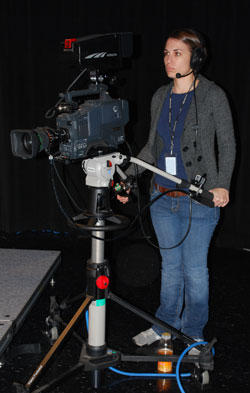
Dana Denha, a CTN camera operator, kept her focus on the debate moderator. A second cameraman shot the candidates. Denha says it's hard to hear the debate – she's listening to the director giving her instructions via her headset.
Tom Partridge showed up a few minutes after the start of the 6 p.m. debate, was shown to his seat on stage, unobtrusively given a mic and worked into the questioning lineup. The debate wrapped up with each candidate giving a two-minute closing statement, some final comments by Zoe Behnke and just enough patriotic music to make you feel like you’re witnessing democracy in action.
Candidates tended to arrive a few minutes early and duck out right after they’re done, though Partridge stayed to chat a bit with 53rd District Democrat incumbent Rebekah Warren before her debate with Matt Erard, the candidate for both the Green and Socialist parties. The Republican candidate, Christina Brewton, had confirmed but was a no-show. There was some speculation about whether she was actively campaigning.
The third debate – with Democrat Jerry Clayton and Republican Dwayne Taylor, candidates for Washtenaw County Sheriff – started at 8 p.m. It was one of three new races that the league added to its expanded debate lineup this year – other new debates are for 15th District Court judge and Washtenaw Community College trustees.
Seeking refuge from the icy studio (kept chilled to accommodate those who were sitting under the hot lights), The Chronicle retreated to the adjoining control room for the final two hours.
Turns out it’s a much different experience from that vantage point. For one thing, you can watch the debate on 12 screens of varying sizes. You notice the visuals more acutely – what color tie a candidate is wearing, for example. And you can talk – or listen to two very funny guys, CTN staffers Rob Cross and Greg McDonald. Cross handled audio while McDonald was director – calling cues to the camera operators to tell them which camera was live, adding graphics to the screen that identified each speaker.
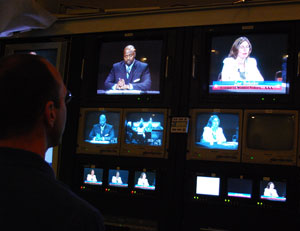
Greg McDonald, director for the debates, keeps an eye on camera shots from the CTN control room. On screen is Jerry Clayton, Democrat candidate for Washtenaw County sheriff, and Zoe Behnke, president of the Ann Arbor League of Women Voters.
These guys had questions of their own, like why do people say “recidivists” instead of “repeat offenders,” or why do jobs like drain commissioner require party affiliations. Unlikely those will be added to the question line-up for the candidates.
The final debate of the evening began at 9 p.m. between candidates for 15th District Court judge: Chris Easthope and Eric Gutenberg. The Chronicle and CTN staff were joined in the control room by Leigh Greden, who came to cheer on fellow city councilmember Easthope – though “cheering” would be one of the things forbidden by league rules: “Do not talk, whisper, move the furniture or make other disruptive noises.” Also, “Do not applaud, even though you are tempted.”
Polite applause is allowed at the end of the debate, however. It’s applause for the democratic process, too – in all its straw-hat-shedding, pink-sign waving, speechifying splendor. It was a fine way to spend four hours.
One final note: We haven’t described the content of these debates because we’d like to encourage you to watch them yourselves when they’re rebroadcast or from the stream on CTN’s website. And tune in tonight when candidates for three other races – Ann Arbor mayor, Ward 5 city council and Washtenaw Community College trustees – face off, starting at 7 p.m.




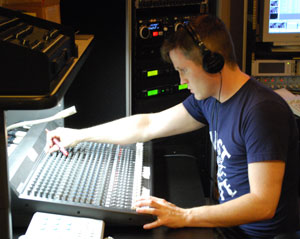
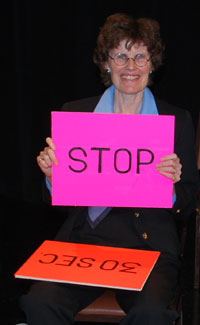
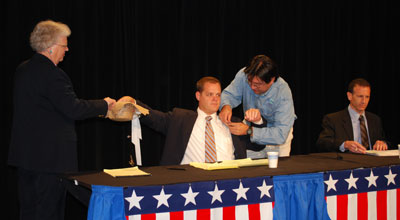
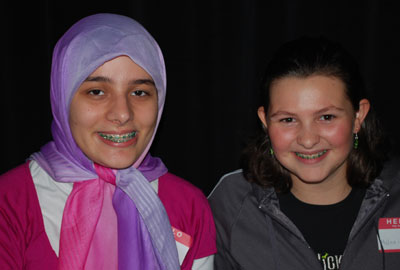
I enjoyed reading Mary Morgan’s column on the League of Women Voters of Ann Arbor Area
candidate forums on Monday, Oct. 13. I believe she provided a clear, accurate description of the events and portrayed the spirit of the League function. Her comments help to characterize two very vital groups in our community: CTN and the League of Women Voters.
Both of these groups work to provide the community valued services which make our lives richer and more informed.